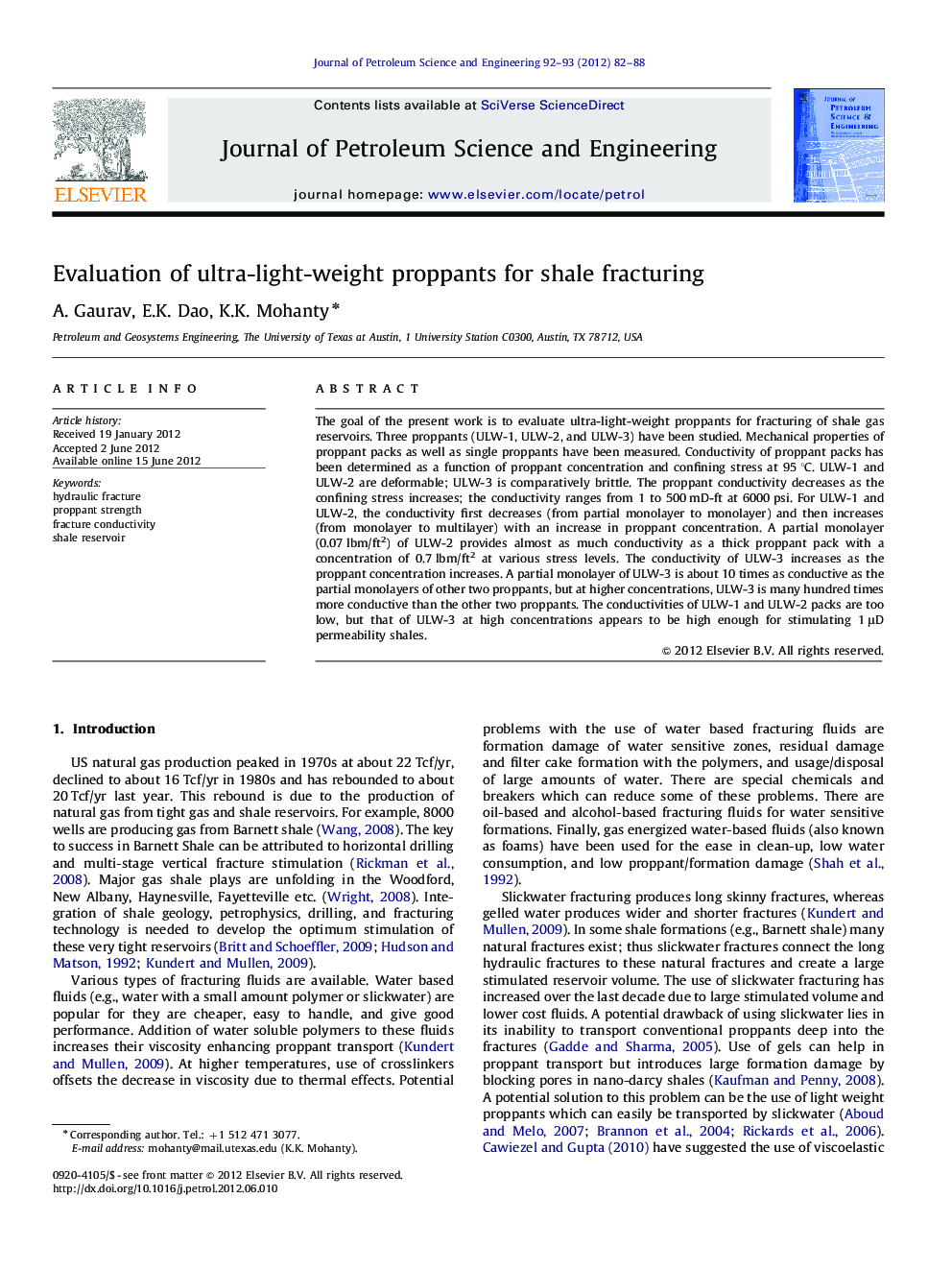| Article ID | Journal | Published Year | Pages | File Type |
|---|---|---|---|---|
| 1755480 | Journal of Petroleum Science and Engineering | 2012 | 7 Pages |
The goal of the present work is to evaluate ultra-light-weight proppants for fracturing of shale gas reservoirs. Three proppants (ULW-1, ULW-2, and ULW-3) have been studied. Mechanical properties of proppant packs as well as single proppants have been measured. Conductivity of proppant packs has been determined as a function of proppant concentration and confining stress at 95 °C. ULW-1 and ULW-2 are deformable; ULW-3 is comparatively brittle. The proppant conductivity decreases as the confining stress increases; the conductivity ranges from 1 to 500 mD-ft at 6000 psi. For ULW-1 and ULW-2, the conductivity first decreases (from partial monolayer to monolayer) and then increases (from monolayer to multilayer) with an increase in proppant concentration. A partial monolayer (0.07 lbm/ft2) of ULW-2 provides almost as much conductivity as a thick proppant pack with a concentration of 0.7 lbm/ft2 at various stress levels. The conductivity of ULW-3 increases as the proppant concentration increases. A partial monolayer of ULW-3 is about 10 times as conductive as the partial monolayers of other two proppants, but at higher concentrations, ULW-3 is many hundred times more conductive than the other two proppants. The conductivities of ULW-1 and ULW-2 packs are too low, but that of ULW-3 at high concentrations appears to be high enough for stimulating 1 μD permeability shales.
► ULW-1 and ULW-2 are deformable; ULW-3 is comparatively brittle. ► The proppant conductivity decreases as the confining stress increases. ► Fracture conductivity can change nonmonotonically with proppant concentration. ► ULW-3 is 10–1000 times more conductive than the other two proppants. ► ULW-1 and ULW-2 are not conductive enough for stimulating 1 μD permeability shales.
